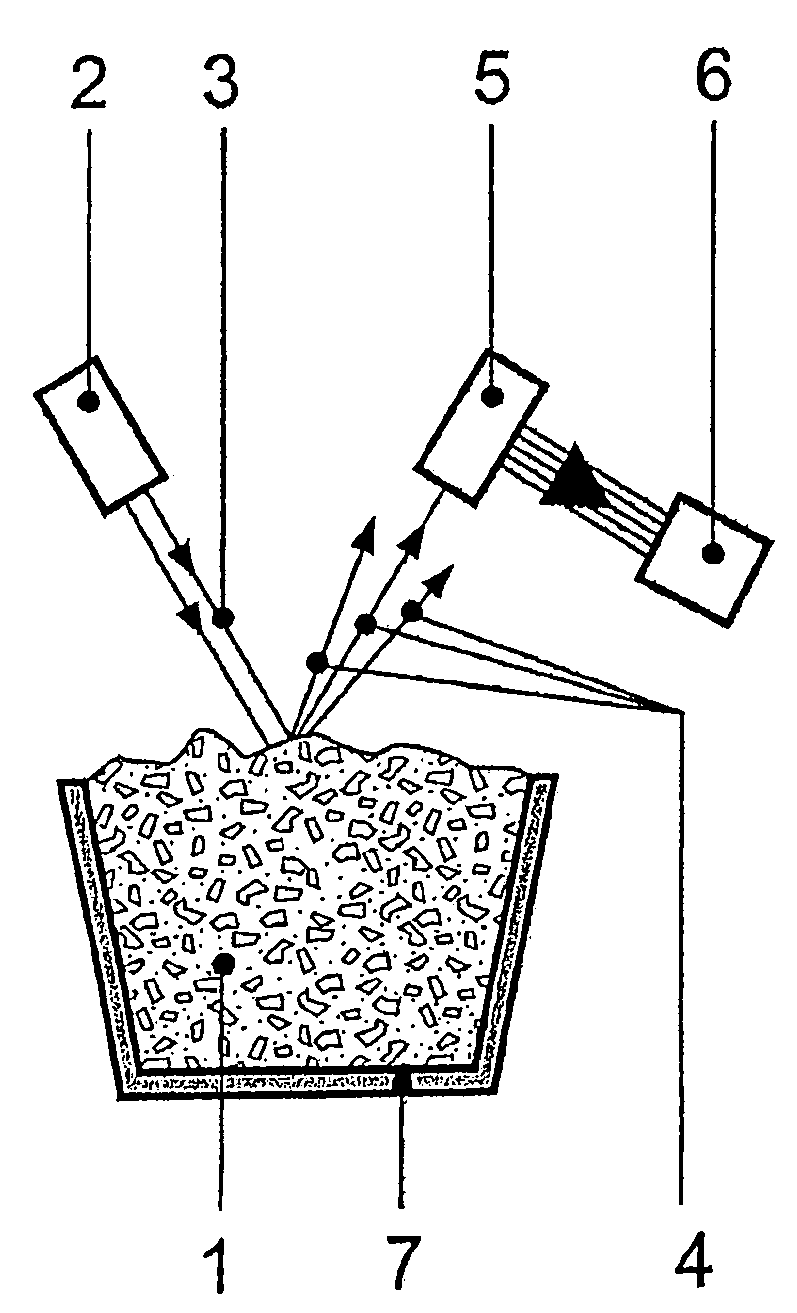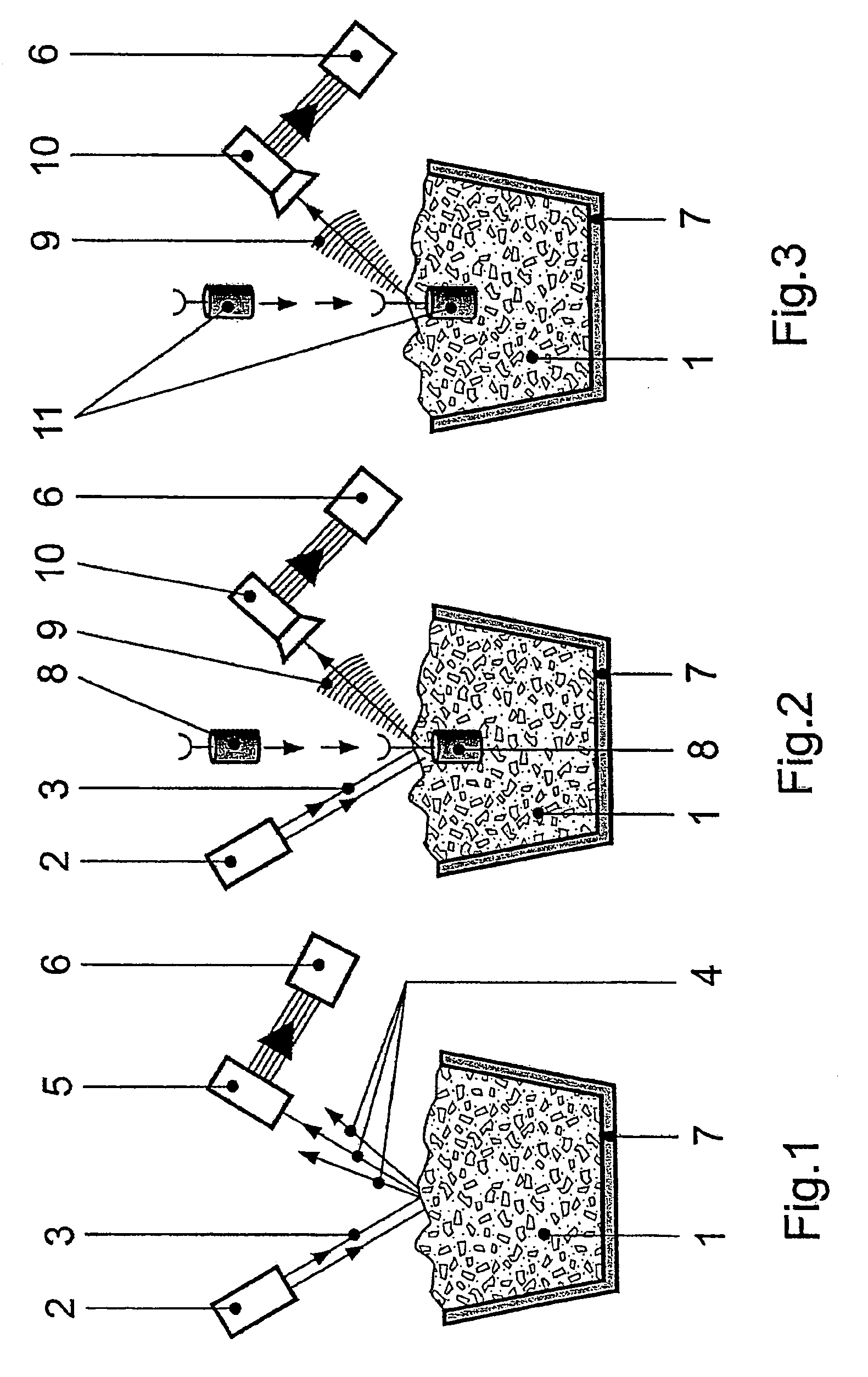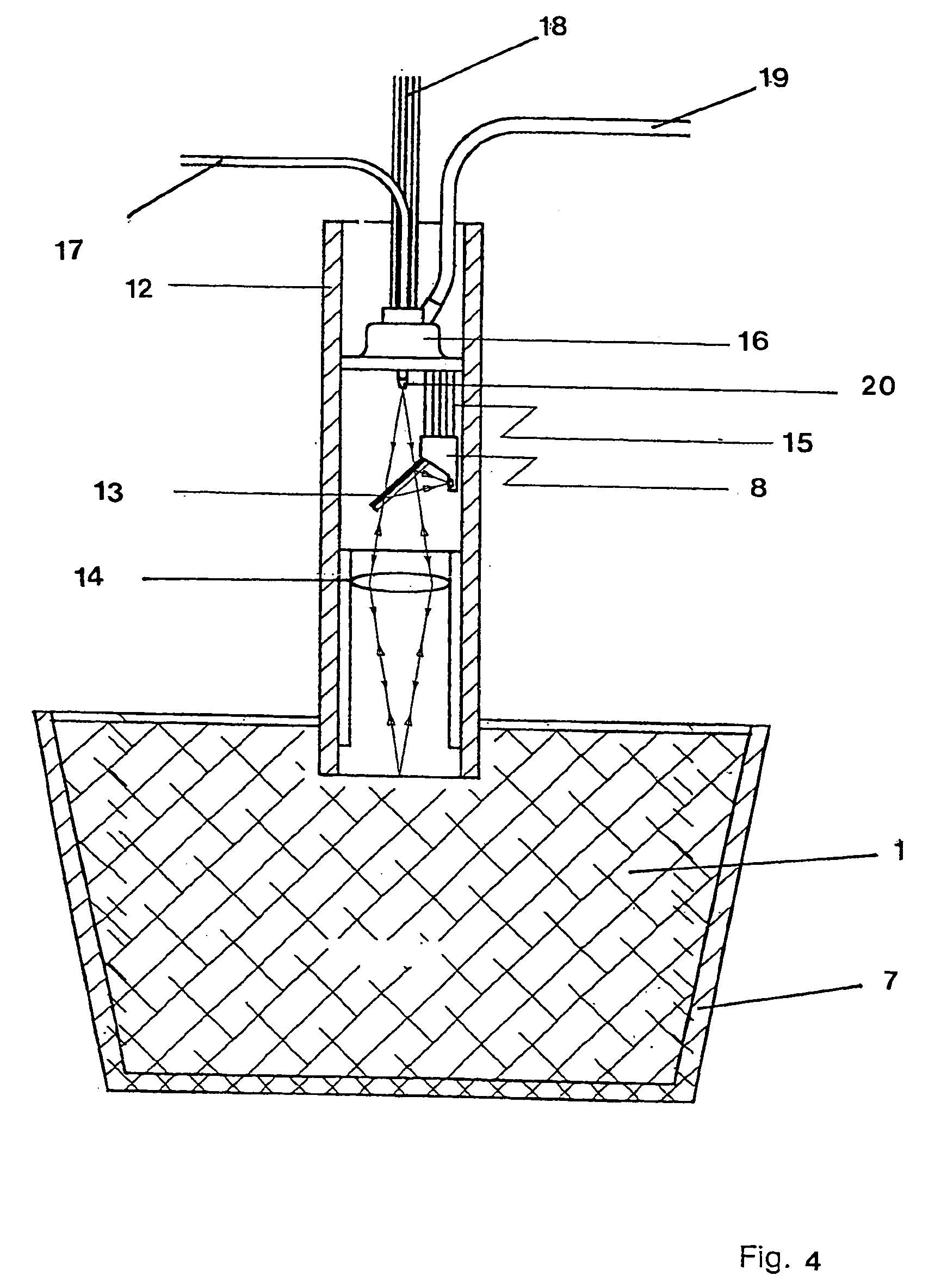Method for analysis of a molten material, device and immersion sensor
a technology of molten materials and sensors, applied in the direction of optical radiation measurement, instruments, furnaces, etc., can solve the problems of difficult development, prone to accidents, and difficulty in broad and intensive industrial application of spectrometric analysis methods using excitation from equipment involving laser radiation, so as to simplify the further signal transmission, simplify the device for spectrometric analysis, and reduce the cost of the associated
- Summary
- Abstract
- Description
- Claims
- Application Information
AI Technical Summary
Benefits of technology
Problems solved by technology
Method used
Image
Examples
Embodiment Construction
[0044]FIG. 1 illustrates a method and device as it is in development or in an industrial pilot stage. There are to be seen here the metal 1, or any solid or fluid material to be analyzed, in a container 7, and a laser system 2, whose beam 3 strikes the metal 1 and there effects such a heating that radiation 4 is emitted therefrom. The radiation 4 is at least partly directed to a spectrometer 5, which is connected with different analysis and / or signal processing systems 6, which enable the interpretation of the information / analysis signal contained in the radiation 4, in order to derive the analysis of the metal 1 therefrom.
[0045]FIG. 2 illustrates an alternative method and device, which can be used for the analysis of a molten metal bath. There are to be seen here the material to be analyzed, which is a metal bath 1 contained in a container 7, along with a CCD spectrometer 8 which is brought into contact with the metal bath 1. The spectrometer 8 is destroyed after the passage of a ...
PUM
| Property | Measurement | Unit |
|---|---|---|
| Fraction | aaaaa | aaaaa |
| Time | aaaaa | aaaaa |
| Pressure | aaaaa | aaaaa |
Abstract
Description
Claims
Application Information
 Login to View More
Login to View More - R&D
- Intellectual Property
- Life Sciences
- Materials
- Tech Scout
- Unparalleled Data Quality
- Higher Quality Content
- 60% Fewer Hallucinations
Browse by: Latest US Patents, China's latest patents, Technical Efficacy Thesaurus, Application Domain, Technology Topic, Popular Technical Reports.
© 2025 PatSnap. All rights reserved.Legal|Privacy policy|Modern Slavery Act Transparency Statement|Sitemap|About US| Contact US: help@patsnap.com



